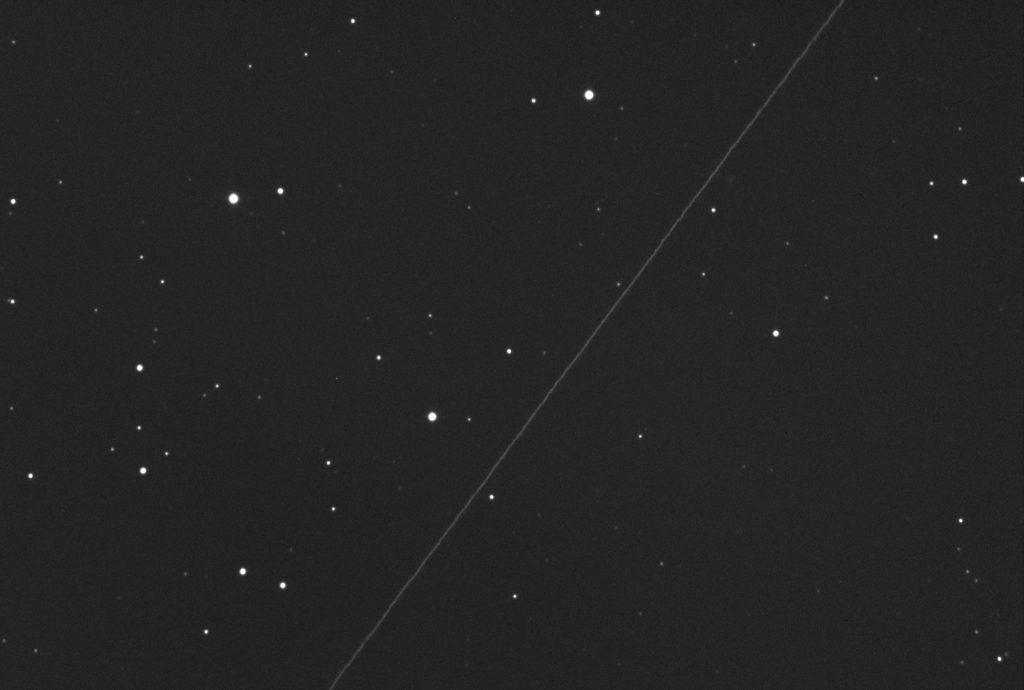Normally, I’d complain about spacecraft streaking through my astrophotos. But not this time. This was entirely planned. This streak was made by the Solar Orbiter.
The Solar Orbiter is a ESA/NASA probe currently on its way to study the Sun. It was launched on the 10th of February 2020 from Cape Canaveral on an Atlas V. Eventually, its orbit will bring it as close to the Sun as 0.29 AU (well inside Mercury’s perihelion) and as far away as 0.91 AU. Its orbit will also be adjusted to be inclined 24° to the plane of the solar system allowing the first photographic view of the Sun’s poles. It will take 3.5 years to reach its operational orbit and at that time will take the closest images ever taken of the Sun. It has already done one flyby of Venus and will use 6 additional Venus flybys to lower its perihelion to the final distance. However, in order to get the correct orientation for the next Venus flyby it had to use the Earth to adjust its orbit. That one and only Earth flyby was last night (Friday, the 26th at 2230 CST). It came as close as 285 miles as it flew over northern Africa and the Canary Islands. Mission engineers were prepared to adjust the flyby parameters if it looked like the probe would be threatened by debris from the recent Russian ASAT test. Here on the Florida panhandle we had to wait for the probe to come out of Earth’s shadow in order to see it. This image was taken just after it emerged into sunlight at 2250 CST.
